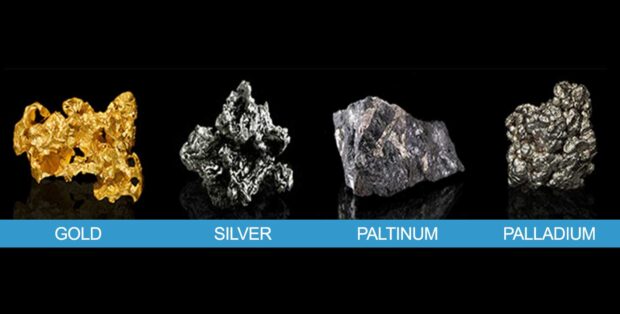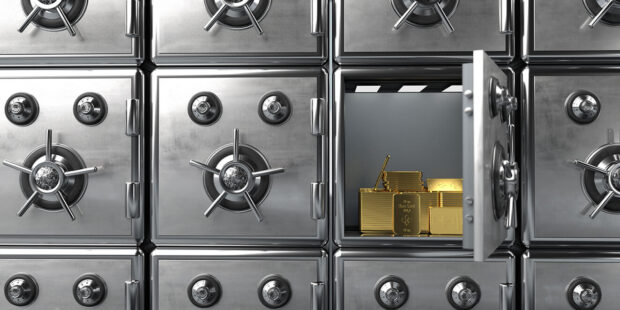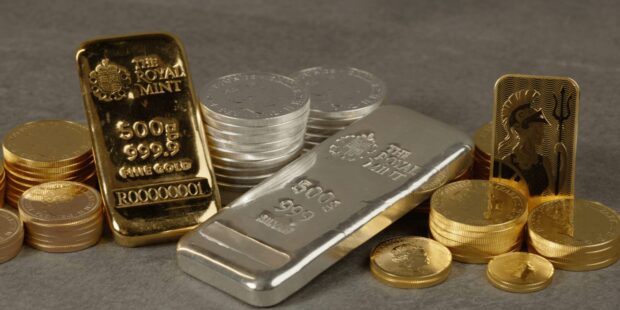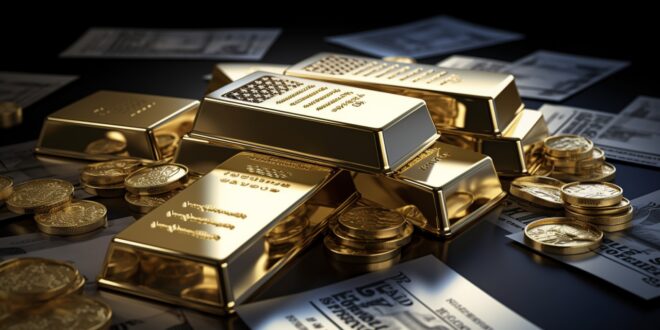Precious metals offer a unique set of characteristics that make them an intriguing financial instrument. They add diversification to your portfolio and can help protect wealth against inflation, geopolitical uncertainty, and the risks inherent to the stock market.
Before you start investing, you need to understand the fundamentals of what precious metals are, how to invest in them, who else invests in them, and economic factors that impact their prices.
1. What Are Precious Metals?

Precious metals are rare, highly valuable metals. Investors primarily focus on gold, silver, and platinum, but there are also others that are much rarer (osmium, rhodium, ruthenium, iridium, and palladium). Other metals, like copper, are too common and cheap, and investing in them is more like investing in other commodities like lumber or coffee.
Gold, silver, and platinum have the largest markets. They’re the most readily available and the most liquid. Roughly $162.6 billion dollars worth of gold is traded on a daily basis.
2. How Can You Invest in Precious Metals?
There are several ways you can invest in precious metals. One of the methods most popular with private investors is buying investment-grade bullion from local bullion dealers. The products you’re looking for are high-purity bars and coins. Bullion is usually 99.9% (or higher) gold, silver, or platinum. You can store these products in a home safe or with an allocated storage provider.
If you don’t want to have to worry about the physical product, you can also invest in a gold Exchange-Traded Fund. These funds own a mix of physical gold, mining stocks, and other gold-adjacent assets.
3. Where Are Precious Metals Stored?

Who owns precious metals and where are they stored? The largest owners of gold and silver on the planet are governments. The five largest gold reserves are owned by the governments of the United States, Germany, France, Italy, and Russia.
Governments and central banks keep gold reserves as a hedge against the value of their currencies, as well as the value of the U.S. dollar, which many governments use for their own currency reserves. Government reserves are stored in highly-secured vaults, the most famous of which is Fort Knox in Kentucky.
Additionally, about 20% of the world’s gold is privately owned, primarily by financial institutions. These are stored in vaults around the globe, backing up futures contracts.
Individual investors store their precious metals in bank vaults, safety deposit boxes, and home safes.
4. What Affects the Price of Precious Metals?
Every savvy investor wants to know how the value of their investments will fluctuate. The gold market is not a simple one, and there are many factors driving the price of gold, including:
- The value of the U.S. dollar compared to foreign currencies.
- Interest rates in the U.S. and locally.
- Geopolitical tensions.
- Demand for gold from the jewellery market, central banks, and institutional investors like ETFs.
- Gold production from mining operations.
All of these factors interact in a complex matrix, and it is not easy to predict where gold prices will go in the future.
Learning about precious metals can open the door to new investment opportunities. Once you understand the fundamentals, you can start investing in precious metals, too.
5. How to Buy Precious Metals
There are several ways to invest in precious metals, and it’s all about what fits your style and needs:
- Physical Metals: Buying actual gold or silver bars, coins, or jewelry is the most straightforward. You own the metal, and it’s in your possession. The downside? Storage and insurance.
- ETFs (Exchange-Traded Funds): These allow you to invest in metals without physically owning them. They are easy to trade but come with management fees.
- Mining Stocks: By investing in companies that mine precious metals, you gain exposure to metals indirectly. However, you’re also exposed to the risks of the mining industry.
- Futures Contracts: These are for more advanced investors, allowing you to speculate on the future price of metals. High risk, high reward.
6. Storage Considerations

So, you’ve decided to buy physical metals. Now, where do you keep them? Proper storage is crucial because you want your investment to stay safe:
- Home Storage: Convenient but risky unless you have a high-quality safe. There’s always a risk of theft.
- Bank Vaults: Safe, but you’ll pay for the privilege, and access can be limited.
- Private Vaults: Similar to bank vaults, but usually with better access options and sometimes cheaper fees.
Whatever you choose, ensure your metals are well-protected and consider insurance as an added layer of security.
7. Tax Implications
Here’s where things get a bit tricky. Precious metals are considered collectibles by the IRS, which means they can be taxed at a higher rate than other investments—up to 28%. It’s essential to be aware of the tax implications before you sell. Consulting with a tax advisor can save you from any surprises down the road.
8. Liquidity and Exit Strategy
Investing is as much about getting out as it is about getting in. Precious metals are generally easy to sell, but the ease depends on what you’re selling. Gold coins like the American Eagle or Canadian Maple Leaf are highly liquid, but that obscure silver bar from an unknown refinery? Maybe not so much. Always have an exit strategy in place. Know where and how you’ll sell when the time comes.
9. Risks and Challenges
Like any investment, precious metals come with risks. Prices can be volatile, especially for metals like silver and platinum, which have significant industrial demand. There’s also the risk of buying counterfeit products, especially when purchasing from less-reputable sources. And don’t forget storage risks—if your metals are stolen or lost, recovering your investment can be challenging.
10. Staying Informed and Educated
Markets change, and so does the value of precious metals. Staying informed is crucial. Read up on market trends, keep an eye on global events (since metals often react to geopolitical issues), and stay connected with other investors. Joining a community of like-minded individuals can provide valuable insights and help you make more informed decisions.
Conclusion
In conclusion, investing in precious metals can be a valuable addition to your financial portfolio, offering both diversification and protection against various economic uncertainties. However, like any investment, it comes with its own set of challenges and risks. Understanding the fundamentals, staying informed, and seeking professional financial advice are key steps to making the most out of your investments in precious metals. By carefully considering your options and aligning them with your financial goals, you can leverage the unique advantages of these assets to enhance your overall financial strategy.`
 Jewel Beat
Jewel Beat

